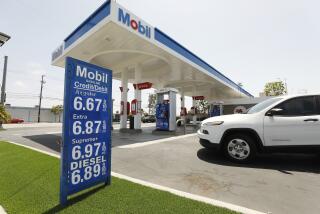Small Gas Station Owners Get Reprieve From EPA
- Share via
WASHINGTON — The U.S. government is giving mom-and-pop gas station operators more time to comply with new federal safety rules for underground storage tanks scheduled to take effect Dec. 22.
Although it’s not an official extension, the Environmental Protection Agency says it won’t focus its inspection resources right after the deadline to ensure compliance by small, independent gas stations.
Instead, during the first six months after Dec. 22, the agency said its inspectors will work to make sure operators of large gas stations, such as those operated by the major oil companies, have met the safety rules.
Station owners have had 10 years to comply with the new regulations, which are designed to upgrade, replace or close old underground storage tanks to stop them from leaking. However, many station operators have failed to take action. Of the 892,000 underground storage tanks currently in operation in the United States, the EPA said only about 500,000, or 56%, can meet the tough federal standards.
“It has become clear that a significant number of [underground storage tanks] will not be in compliance by Dec. 22,” the EPA said in a letter sent Wednesday to its regional administrators.
With gasoline station operators facing fines of $11,000 a day for violating the rules, the EPA’s regional offices were told that independent stations won’t be inspected right away.
The agency said it also would take a similar inspection approach to underground tanks operated by school districts, fire and police departments and other public service entities.
The high cost of bringing tanks into compliance is the main reason many operators have delayed it.
The EPA estimates it would cost $12,700 to upgrade a three-tank facility with spill, overfill and corrosion protection.
To completely replace the tanks would cost between $80,000 and $100,000 and take two or three weeks, assuming no cleanup is needed.
Permanently closing the same three tanks would cost between $5,000 and $11,000 as the tanks are emptied, cleaned and removed or filled with solid material.
To help independent operators finance those costs, the EPA said it will help arrange loans through state and federal agencies, such as the Small Business Administration.
More to Read
Sign up for Essential California
The most important California stories and recommendations in your inbox every morning.
You may occasionally receive promotional content from the Los Angeles Times.













